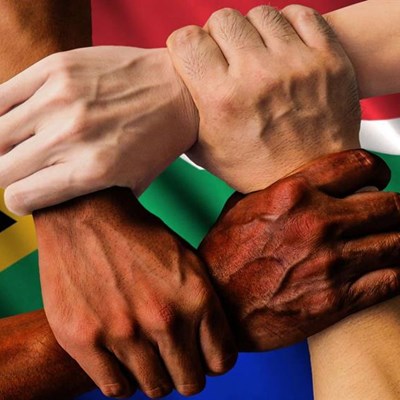
In the rich tapestry of South Africa's history, one particular day stands out as a testament to the nation's journey towards unity and Reconciliation, December 16, now celebrated as Reconciliation Day. This day has undergone a significant transformation, evolving from its colonial and apartheid-era origins to becoming a symbol of hope, understanding, and shared identity for the diverse people of South Africa.
Originally known as Dingaan's Day during colonial rule, December 16 commemorated the Battle of Blood River in 1838. This battle unfolded between the Voortrekkers, European settlers moving inland, and the Zulu Kingdom led by Dingaan. The victory of the Voortrekkers was later commemorated on this day, reinforcing a sense of triumph and dominance during the colonial era.
As South Africa plunged into the depths of apartheid, Dingaan's Day became a tool for the government to perpetuate divisions among its people. The celebration was used to emphasize racial superiority and legitimize the oppressive policies of the time. The name itself carried a historical weight that was manipulated to justify discriminatory practices, fostering an environment of animosity and mistrust.
The transition from apartheid to democracy brought about the need for a radical shift in perspective. In 1994, with the end of apartheid, the newly elected government led by Nelson Mandela sought to rewrite the narrative of December 16. The day was rebranded as Reconciliation Day, reflecting the nation's commitment to healing the wounds of the past and building a unified future.
To fully understand the historical context of Reconciliation Day, one must also delve into the late Zulu monarch's reign. Shaka, the legendary Zulu king, played a pivotal role in shaping the destiny of his people. His death at the hands of his half-brothers marked a turning point, leading to power struggles and instability within the Zulu Kingdom.
It was against this backdrop that Dingaan's controversial rule unfolded, setting the stage for the events that transpired on December 16, 1838. Reconciliation Day, born out of a tumultuous history, now stands as a symbol of South Africa's resilience and determination to overcome its divisive past. The transformation from Dingaan's Day to Reconciliation Day encapsulates the nation's journey from conflict to conciliation.
As South Africans gather on December 16 , they not only remember the battles fought but also celebrate the progress made towards unity and understanding, forging a path towards a brighter and more harmonious future. Dingaan's Day, observed on December 16th, commemorates the Battle of Blood River, a pivotal event in South African history.
The day is named after Dingaan, the Zulu king who ruled during the early 19th century. In 1838, a group of Voortrekkers, Dutch-speaking settlers, led by Andries Pretorius, clashed with the Zulu forces under Dingaan's command. Tensions arose when the Voortrekkers sought land in the interior of Southern Africa, leading to conflicts with indigenous peoples, including the Zulus.
The Voortrekkers, facing hostility from the Zulus, prepared for battle, constructing a laager (a circular formation of wagons) at the Ncome River. On December 16, 1838, approximately 470 Voortrekkers faced an estimated 10,000 Zulu warriors in what became known as the Battle of Blood River. Utilizing superior firepower and tactics, the Voortrekkers, with their innovative "Dop System," secured a decisive victory, losing only three men while thousands of Zulus perished.
Dingaan's Day emerged as a symbolic celebration of Afrikaner nationalism, reflecting the Voortrekkers' triumph over adversity. Over time, the day evolved into a controversial public holiday, symbolizing conflicting narratives of conquest and resistance. In post-apartheid South Africa, efforts have been made to reframe the day as a moment for reconciliation and unity among diverse communities.
**The views expressed above are of the writer, who wrote in his personal capacity and does not represent Mo Media as a publication, its readers, personnel, advertisers and all other related stakeholders**


